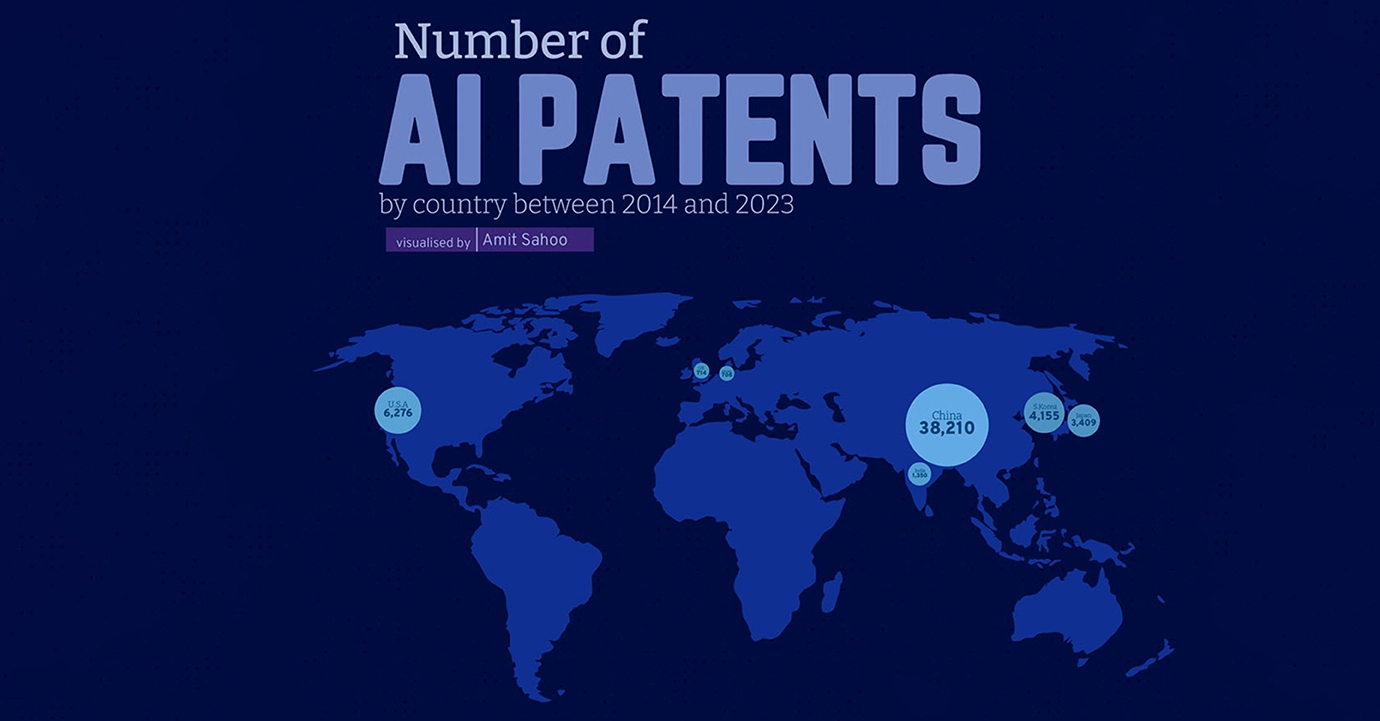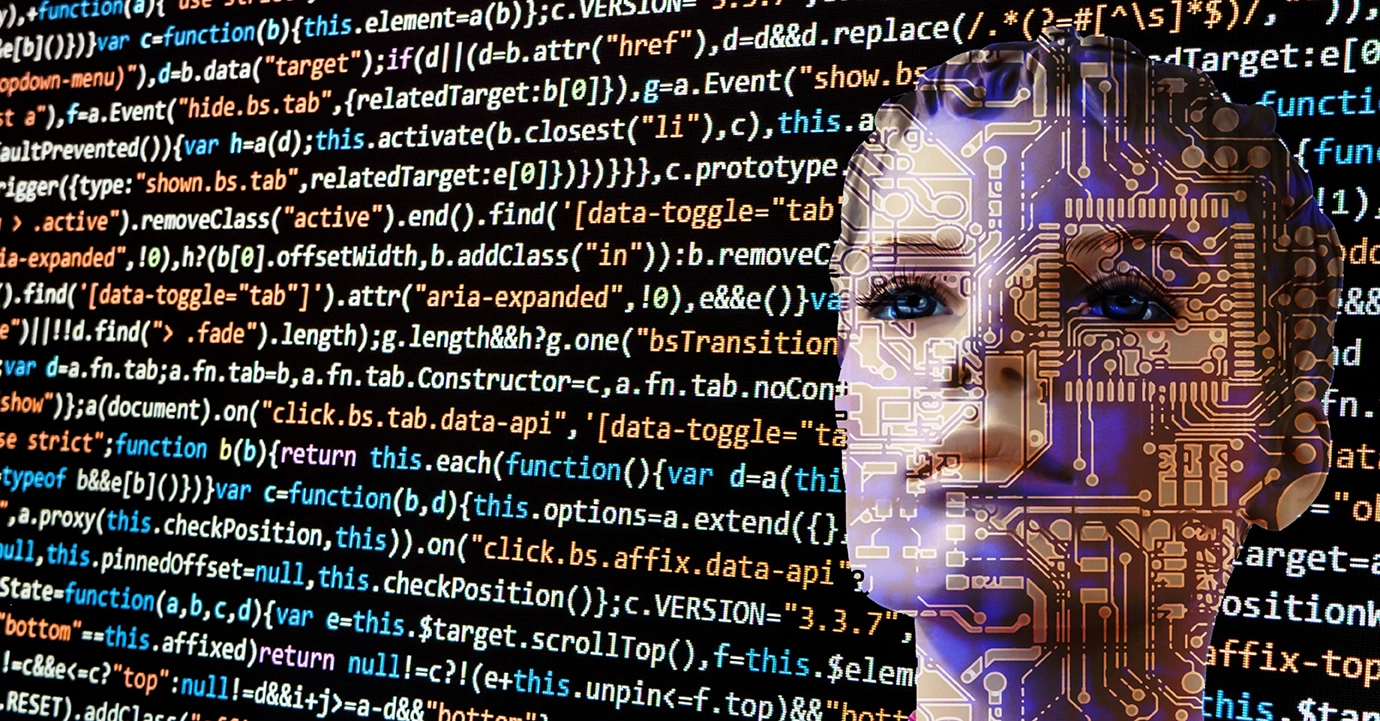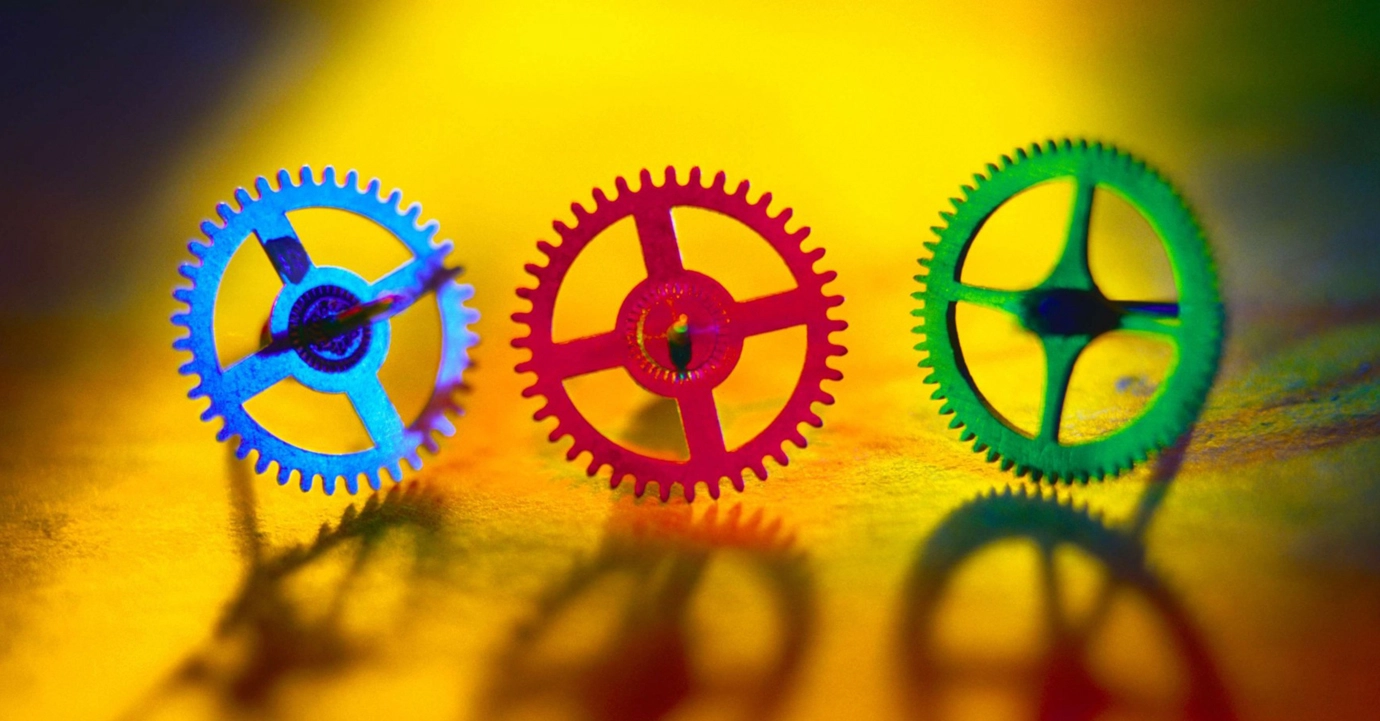China’s AI Patents and
Compensation for Patent Infringement†
Table of Contents
Estimated Reading Time
- 8 min

(Publicdomainpictures.net)
China stood out in the World Intellectual Property Organization’s latest report on generative artificial intelligence (“GenAI”) as, compared with other countries, China invented the largest number of GenAI technologies from 2014 to 2023. This momentum of innovation should be welcomed by Chinese leaders but should also prompt them to ponder a key question: how can they help to maintain and grow this momentum and ensure that China’s “new quality productive forces” will continue to drive the country’s long-term development? A case recently decided by the Supreme People’s Court shows that China is developing robust legal solutions to these challenges, among other tools.
AI Patents
“From 2014 to 2023, China published more than 38,000 ‘patent families’ in the field of GenAI.”
In a “Patent Landscape Report” titled Generative Artificial Intelligence, the World Intellectual Property Organization shares the latest patent trends for GenAI. From 2014 to 2023, China published more than 38,000 “patent families” in the field of GenAI. The term “patent family” is defined by the organization as “a collection of patent applications covering the same or similar technical content (i.e., the same invention)”. Ranked below China are the United States (with approximately 6,300 patent families), South Korea, Japan, India, the United Kingdom, and Germany (with 708 patent families). GenAI patents held by these six countries and China account for 94% of the total number of such patent families in the world.
Among the 20 top owners of GenAI patents published from 2014 to 2023, only three are research organizations, namely, the Chinese Academy of Sciences (ranked 4th), Tsinghua University (15th), and Zhejiang University (16th).
The remaining 17 top owners are corporations, ten of which are in China: Tencent (ranked 1st), Ping An Insurance Group (2nd), Baidu (3rd), Alibaba Group (6th), Bytedance (9th), BBK Electronics (11th), Netease (12th), Huawei (14th), China Mobile (17th), and State Grid (18th). Non-Chinese corporations that are on the list include four U.S. companies (i.e., IBM (5th), Alphabet/Google (8th), Microsoft (10th), and Adobe (19th)), two Japanese companies (i.e., NTT (13th) and Sony Group (20th)), and one South Korean company, Samsung Electronics (7th).
Punitive Damages
These patent trends show that China has become a leading innovative country in the field of GenAI. To maintain this lead, China must, among other measures, reassure its best and brightest minds that their inventions will be strongly protected.
A key source of such protection is China’s court system. In March 2025, when ZHANG Jun, President of the Supreme People’s Court, presented his annual work report, he highlighted how China’s court system contributed to the development of “new quality productive forces” in 2024 by, inter alia, granting punitive damages in “malicious infringement” cases involving “serious circumstances”. In 2024, 460 cases decided in China fell under this category. One of these cases involved technical secrets of the chassis of a type of new energy vehicle and punitive damages amounting to RMB 640 million were ordered by court.
Clearer Standards for Calculating Compensation
“Another step taken by Chinese courts to strengthen judicial protection of inventions is to set clearer standards for calculating compensation.”
Another step taken by Chinese courts to strengthen judicial protection of inventions is to set clearer standards for calculating compensation. This was accomplished in a recent case decided by the Intermediate People’s Court of Suzhou City, Jiangsu Province (“Suzhou Court”). In this case, the court awarded more than RMB 6 million as compensation. The lower court’s ruling was upheld by the Supreme People’s Court in December 2024, sending a strong message to current and future infringers that their infringements could lead to significant amounts of liability.
The case concerns an award-winning high-tech company in Wuhan (“Wuhan Company”), which obtained a patent in January 2018 for its invention called “V-BY ONE signal processing method and device”. The patented method and device are used in the production of ultra-high-resolution LCD screens to conduct luminous display inspections on panels.
Wuhan Company alleged that, without permission, a company in Suzhou (“Suzhou Company”) used the patented V-BY ONE signal processing method in two signal detection devices (“allegedly infringing products”) and manufactured, sold, and promised to sell a large number of these devices to other companies, causing huge economic losses to Wuhan Company. The Suzhou Court ruled in favor of Wuhan Company and then focused on the calculation of compensation. This case tested the court’s ability to set clearer standards for the purpose of determining appropriate compensation.
The basic formula for such calculation is stated in a judicial interpretation issued by the Supreme People’s Court. Essentially, the amount of compensation should be calculated by multiplying “the total reduction in sales of patented products due to infringement” by “the reasonable profit of each patented product”. However, if “the total reduction in sales of patented products due to infringement” is difficult to determine, this can be replaced with “the total number of infringing products sold in the market”. The Suzhou Court used this adapted formula for the calculation. Based on multiple examinations of Suzhou Company’s tax records, the two parties agreed that Suzhou Company had sold 260 sets of infringing products.
When calculating “the reasonable profit of each patented product”, the Suzhou Court emphasized that it should be calculated by multiplying three factors: (1) “the price of the entire product carrying the patented technology”, (2) “the profit margin”, and (3) “the proportion that the patented technology contributes to the increased value of the entire product”. The court did not accept Suzhou Company’s argument that the price of the components using the patented technology, i.e., the patented V-BY ONE signal processing method, should be used to replace the first factor in the aforementioned formula. The court explained that Suzhou Company failed to recognize that “the value created by the combination of patented components and non-patented components is often greater than the simple addition of the amount of each component”, as reflected in this case, where the signal detection device could not operate normally without the close coordination of the software and the hardware.
To determine the first two factors in the above formula—“the price of the entire product carrying the patented technology” and “the profit margin”—the Suzhou Court emphasized that Wuhan Company, a listed company, had financial records and annual reports, which had been audited. The court, therefore, drew on these documents to settle on RMB 124,000 as the price of each set of the product and 36.08% as the profit margin.
As for the third factor, i.e., “the proportion that the patented technology contributes to the increased value of the entire product”, the court first considered the fact that the entire product included the patented V-BY ONE signal processing method and two other signal processing methods. Because the contribution of each method to the increased value of the entire product was not assessed, the court began with a presumption that each method’s contribution was the same, i.e., one-third of the total (33.33%). The court then adjusted the 33.33% proportion by comprehensively considering a wide range of factors regarding the patented V-BY ONE signal processing method. These factors included the considerations that “the remaining validity period of the patent was still quite long”, “the degree of innovation of the patented technology was quite high”, and the patented technology was “obviously superior” to the existing technology used by the other signal processing methods. As a result, the court decided that the patented V-BY ONE signal processing method should have a higher contribution and determined the appropriate proportion to be 55%.
Based on the above analysis, the Suzhou Court calculated “the reasonable profit of each patented product” in this way: RMB 124,000 per set * 36.08% * 55% = RMB 24,606.56 per set. The total amount of compensation was then calculated to be RMB 6,397,706 (i.e., RMB 24,606.56 per set * 260 sets).
Understandably, there is still room for improvement in the Suzhou Court’s approach. For example, future cases may reveal how to more accurately adjust “the proportion that the patented technology contributes to the increased value of the entire product”. However, the Suzhou Court made admirable efforts to set a good foundation for future cases. As this approach has been upheld by the Supreme People’s Court, it is likely to provide useful guidance for future cases. With these clearer standards for calculating compensation in patent infringement cases, China is in a better position to protect inventions, including those in the field of GenAI, and motivate its talented professionals to stay innovative.
- The citation of this article is: Dr. Mei Gechlik, China’s AI Patents and Compensation for Patent Infringement, SINOTALKS.COM®, In Brief No. 54, Mar. 26, 2025, https://sinotalks.com/inbrief/ai-patent-compensation.
The original, English version of this article was edited by Nathan Harpainter. The information and views set out in this article are the responsibility of the author and do not necessarily reflect the work or views of SINOTALKS®. ↩︎





